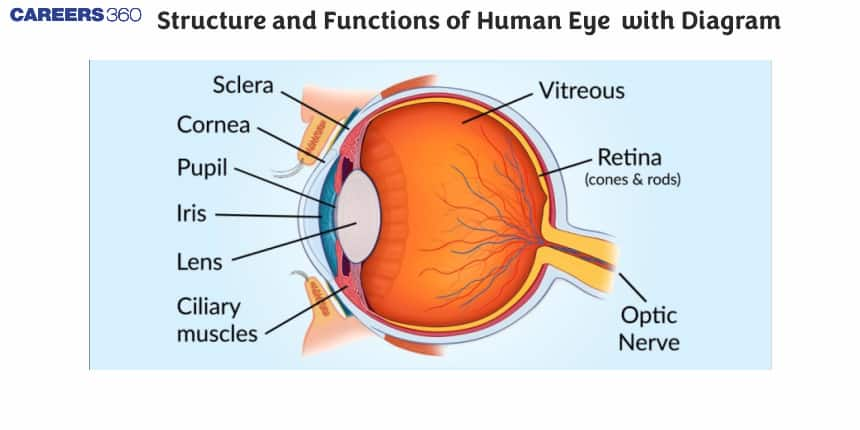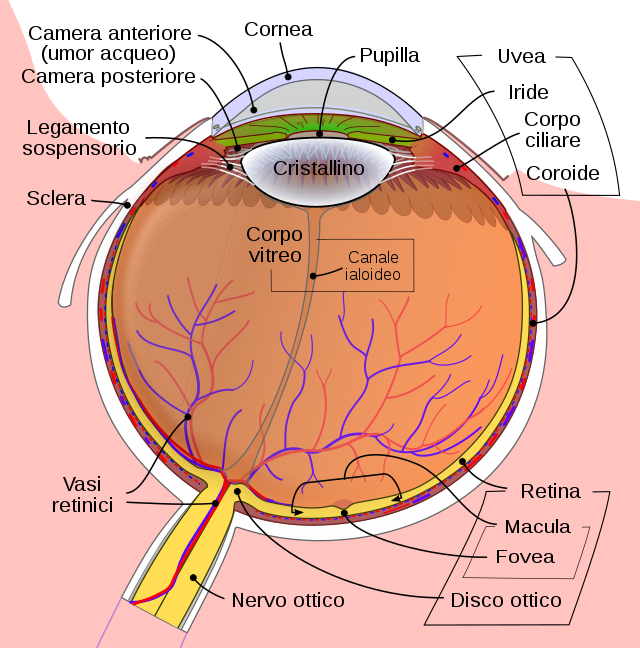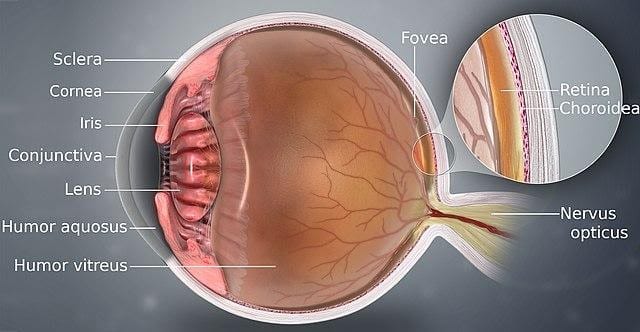Structure and Functions of Human Eye with Diagram
The eye is one of the body's sense organs. The eye's structure is vital to comprehend because it is one of the most significant sensory organs in the human body. It is primarily responsible for vision, colour discrimination (the human eye can distinguish around 10 - 12 million colours), and the human body's biological clock. The human eye and a camera are similar in that they both gather, focus, and transmit light through a lens to create an image of an object.

The eye's structure is crucial to examine because it is one of the most significant sense organs in humans. The feeling of vision is made possible by the eyes. The human eye's structure is similar to that of a camera. Both of them create images by gathering, focussing, and transmitting light through a lens.

Also read -
Structure and functions of eye:
The eyeballs are not entirely spherical, contrary to popular perception; instead, they are made up of two different segments fused together.
The human eye is one of the most complex sensory organs in the body. Every element of the human eye, from muscles and tissues to nerves and blood arteries, is accountable for a certain action. Furthermore, contrary to popular assumption, the eye is made up of two different parts fused together, rather than being entirely spherical. It is made up of various muscles and tissues that produce an approximately spherical shape. The human eye can be divided into two categories from an anatomical standpoint: outward structure and internal structure.
Every portion of the human eye has a specific purpose, and these functions are added together to produce the final vision. Internal and exterior structure are the two fundamental components of the eye.
Let's take a look at each one separately.
The sclera, conjunctiva, cornea, iris, and pupil make up the exterior structure of the eye. The sclera is the white, dense connective tissue covering on the outside of the eye. Its purpose is to protect the eye's inner workings. The conjunctiva is a layer of stratified squamous epithelium that lies over the sclera. It works to keep our eyes hydrated and clear. Tears and mucus are secreted to offer lubrication.
The cornea is the translucent front portion of the eye. It covers the iris as well as the pupil. Its purpose is to refract light beside the eye's lens. The pigmented region of the eye that determines eye colour is called the iris. It is the middle region of the outer eye that is visible. Its purpose is to keep the pupil's diameter constant in relation to the light source. The pupil is a tiny hole in the centre of the iris that allows light to pass through. It permits light to pass through to the eye. It concentrates the light entering the eye on the retina.
Related Topics Link, |
The eye's interior structure is a little complicated. The lens, retina, optic nerve, aqueous humour, and vitreous humour are all part of it.
The lens is a clear biconvex structure with connective tissue connecting it to the ciliary body. The lens, in conjunction with the cornea, refracts the light entering the eye and assists in focusing it on the retina. The retina is the most important portion of the eye for vision. It is the eye's deepest layer. It is sensitive to light and looks like camera film. The retina contains color-detecting photoreceptor cells. The image is converted into electrical signals by the retina. The brain then processes these electrical signals. The optic nerve, which is located in the back of the eyes, is in charge of transmitting nerve impulses from the retina to the brain.
The watery fluid that exists between the lens and the cornea is known as aqueous humour. It hydrates the eye while nourishing it. On the other hand, vitreous humour is a clear jelly-like fluid that lies between the retina and the lens. Its purpose is to protect the eye while also maintaining the spherical form of the eye.

External structure of eyes:
The following are the portions of the eye that are visible from the outside:-
- Sclera is a visible white part of the skin. It protects the inner organs and is made up of dense connective tissue.
- The conjunctiva is a layer of stratified squamous epithelium that lines the sclera. It lubricates our eyes and maintains them moist and clear by secreting mucus and tears.
- Cornea: The cornea is the transparent, front component of our eye that covers the pupil and iris. The primary purpose of the lens is to refract light.
- Iris: The pigmented, coloured region of the eye that is visible from the outside. The iris' primary role is to regulate the diameter of the pupil in response to the light source.
- The pupil is the little opening in the centre of the iris. It lets light in and focuses it on the retina.\
Also Read:
- NCERT solutions for Class 12 Physics Chapter 9 Ray Optics and Optical Instruments
- NCERT Exemplar Class 12 Physics Solutions Chapter 9 Ray Optics and Optical Instruments
- NCERT notes Class 12 Physics Chapter 9 Ray Optics and Optical Instruments
Internal structure of eyes:
The following are the internal components of an eye:
- The lens of an eye is a clear, biconvex lens. Ligaments connect the lens to the ciliary body. The lens, in conjunction with the cornea, refracts light to concentrate it on the retina.
- The retina is the eye's innermost layer. It is light-sensitive and functions as a camera film. There are three layers of neural cells in them: ganglion, bipolar, and photoreceptor cells. It turns a picture into electrical nerve impulses that the brain can perceive.
- The ophthalmic nerve is found in the back of the eyes. All nerve impulses from the retina to the human brain are carried via the optic nerves, which are responsible for perception.
- Between the cornea and the lens is a watery fluid called aqueous humour. It nourishes and inflates the eyeball.
- Vitreous Humour is a jelly-like translucent material found between the lens and the retina. It is made of of 98% water, collage, proteins, and other ingredients. Vitreous humour's primary role is to protect the eyes and maintain their spherical shape.
Also check-
- NCERT Exemplar Class 11th Physics Solutions
- NCERT Exemplar Class 12th Physics Solutions
- NCERT Exemplar Solutions for All Subjects
NCERT Physics Notes:
Frequently Asked Questions (FAQs)
The human eye is a roughly spherical organ that receives visual impulses and processes them. It is contained within the skull's eye sockets and is held in place by muscles within the sockets.
Because the eye is made up of two parts fused together, it does not have a perfectly spherical form. External components are structures visible from the outside of the eye, while internal components are structures found within the eye.
The following are examples of external and internal components:
Retina,Vitreous Humour, aqueous humour ,Sclera ,Conjunctiva ,Cornea, Iris, Pupil.
The following are examples of the eye's exterior structures:
Sclera, Conjunctiva, Cornea, Iris , Pupil
The conjunctiva lubricates the eye's front surface. It also keeps debris, dust, and infection-causing bacteria out of the eyes.
By managing the diameter and size of the pupil, the iris controls the quantity of light that enters the eyes.
There are two layers to the iris: Pigmented epithelial cells in the stroma, the front pigmented fibrovascular layer